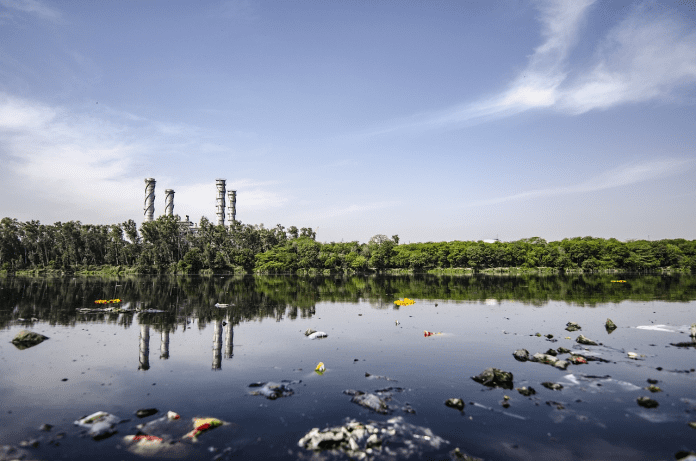Clean and safe water is a fundamental necessity for all living beings. Unfortunately, throughout history, several incidents of water contamination have highlighted the vulnerabilities of our water supply systems. These cases, from industrial pollution to inadequate infrastructure, underscore the importance of safeguarding our water resources.
This article will delve into some of the most significant water contamination cases in the United States.
Flint Water Crisis
The Flint water crisis, unfolding in 2014, spotlighted the dire repercussions of neglecting water quality. To save money, city officials changed Flint’s water source to the Flint River without implementing proper corrosion controls.
In March 2015, subsequent tests revealed lead concentrations exceeding limits in a Flint home’s drinking water. The concentration surpassed the US Environmental Protection Agency’s (EPA) actionable limit by over 25 times. Further testing later showed lead levels that exceeded EPA criteria, classifying the water as hazardous waste.
The CDC emphasized that no level of lead exposure was safe, given its lifelong and debilitating health effects. This resulted in lead seeping into the drinking water, imperiling thousands, particularly vulnerable children prone to lead poisoning.
The crisis exposed tens of thousands to hazardous lead levels and triggered Legionnaire disease outbreaks, leading to a dozen deaths and numerous illnesses.
The crisis ignited public outrage and brought attention to environmental injustice and inadequate government response. It also underscored the pressing necessity for infrastructure upgrades to avert similar disasters in the future.
Camp Lejeune Water Contamination
The Camp Lejeune water contamination case starkly illustrates the dangers that military personnel and their families can confront due to inadequate water management.
Hazardous substances, particularly trichloroethylene (TCE) and perchloroethylene (PCE), were discovered in the drinking water supply of the military base. According to TorHoerman Law, this led to various health issues for individuals stationed there from the 1950s to the 1980s.
Alarmingly, a report unveiled the grave repercussions that befell Marines stationed at Camp Lejeune. They faced an approximate 10 percent increased likelihood of succumbing to fatalities attributed to various cancer types.
This contrasted with their counterparts stationed at Camp Pendleton, raising concerns about the environmental and health conditions at Camp Lejeune.
This unsettling situation led to the emergence of the Camp Lejeune contaminated water lawsuit. Through this lawsuit, the plaintiffs sought recourse for the health repercussions they faced.
This case highlights the importance of strict environmental regulations and proper waste disposal practices, especially in densely populated areas.
Love Canal Disaster
The Love Canal disaster of the late 1970s serves as a haunting testament to the enduring impacts of industrial waste on communities.
Originally a deserted canal, the Love Canal area transformed into a dumping ground for approximately 22,000 tons of chemical waste. These hazardous materials, including polychlorinated biphenyls, dioxin, and various pesticides, were deposited by the Hooker Chemicals and Plastics Corporation during the 1940s and ’50s.
Tragically, this led to the infiltration of substances and heavy metals into the soil and groundwater, sparking widespread health issues among the residents.
As the years passed, the land was repurposed for housing by the city of Niagara Falls, unaware of the lurking danger beneath. In 1978, state authorities detected the leakage of toxic chemicals from the underground into residential basements.
Subsequent investigations unveiled an alarming rise in chromosomal damage among the local populace attributed to prolonged exposure to these perilous chemical wastes. In response, a significant portion of Love Canal had to be evacuated, prompting the state of New York to acquire the abandoned land.
The site was secured with caps and fences while the surrounding structures were demolished. After prolonged legal conflicts, the resolution finally came for Occidental Chemical Corporation, the purchaser of Hooker, in the late 1960s.
This culminated in a settlement of $20,000,000, which was reached with approximately 1,300 previous residents of Love Canal. This settlement marked a somber episode in US history, highlighting the consequences of unregulated industrial pollution.
West Virginia Chemical Spill
In early 2014, a major environmental occurrence occurred when a substantial amount of chemical substances employed in coal processing were inadvertently discharged. The release stemmed from a containment vessel, contaminating West Virginia’s ELK River water body.
This river serves as a crucial municipal water source, catering to the needs of around 300,000 individuals residing in Charleston. This chemical spill plunged the community into a dire situation, leaving all the residents grappling with a lack of access to safe drinking water.
Acknowledging the gravity of the circumstance, the National Toxicology Program (NTP) was nominated by the CDC and the ATSDR.
Their request entailed conducting comprehensive toxicity studies on the key chemicals predominantly involved in the West Virginia chemical spill. Of notable concern was the primary spilled substance known as 4-methylcyclohexane methanol (MCHM).
Additionally, the spill contained smaller amounts of other chemicals, specifically propylene glycol phenyl ether (DiPPH) and propylene glycol phenyl ether (PPH). With sparse data on the potential human health effects of the compounds in the spilled liquid, the NTP initiated a comprehensive investigation. They aimed to uncover the potential risks and impacts linked to these substances.
The incident sparked conversations about the need for improved chemical storage facility supervision. Additionally, it highlighted the significance of diversifying water sources to enhance resilience in dealing with such accidents.
Conclusion
The water contamination cases discussed above serve as stark reminders that the safety of our water supply is not guaranteed. They underscore the importance of proactive measures, such as robust regulations, infrastructure upgrades, and public awareness campaigns, to prevent future incidents.
Clean water is a basic human right and essential for the health and well-being of communities across the United States. As we learn from these historical cases, let us work collectively to ensure a cleaner, safer, and more sustainable water future for all.






